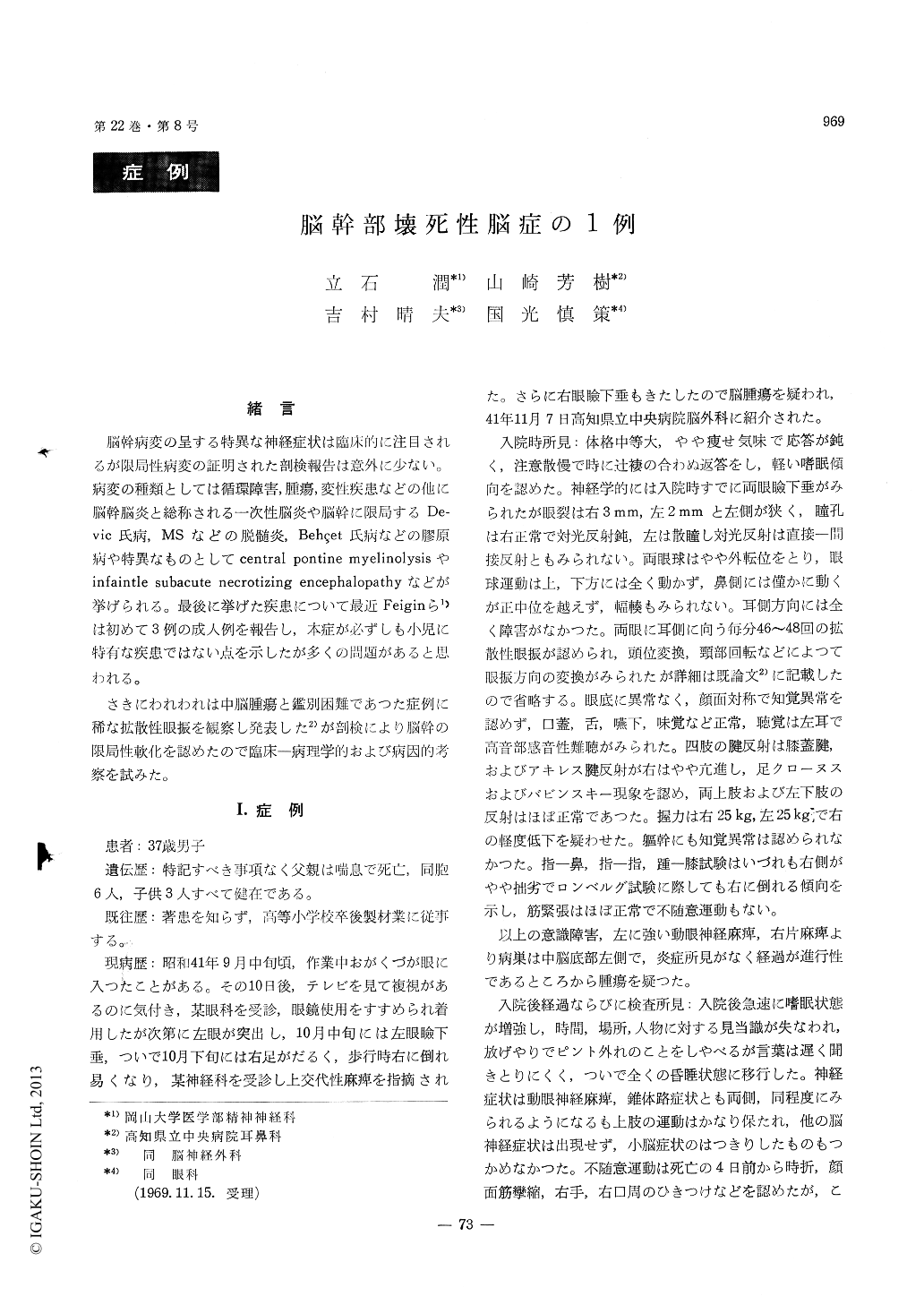Japanese
English
- 有料閲覧
- Abstract 文献概要
- 1ページ目 Look Inside
緒言
脳幹病変の呈する特異な神経症状は臨床的に注目されるが限局性病変の証明された剖検報告は意外に少ない。病変の種類としては循環障害,腫瘍,変性疾患などの他に脳幹脳炎と総称される一次性脳炎や脳幹に限局するDe—vic氏病,MSなどの脱髄炎,Behcet氏病などの膠原病や特異なものとしてcentral pontine myelinolysisやinfaintle subacute necrotizing encephalopathyなどが挙げられる。最後に挙げた疾患について最近Feiginら1)は初めて3例の成人例を報告し,本症が必ずしも小児に特有な疾患ではない点を示したが多くの問題があると思われる。
さきにわれわれは中脳腫瘍と鑑別困難であつた症例に稀な拡散性眼振を観察し発表した2)が剖検により脳幹の限局性軟化を認めたので臨床一病理学的および病因的考察を試みた。
A 37-year-old healthy man gradually showed diplopia, ptosis of the left lid, anisocoria (rt.<lt.) and weakness of the right limbs. A few days after the admission he developed the right lid ptosis of lesser degree, associated with loss of consciousness. Each eye moved only to the lateral side and a divergence nystagmus was observed. The course was progressive and he died two and a half months after the onset of diplopia.
An autopsy revealed necrotizing lesions in the tegmentum of midbrain and upper pons with sym-metrical accentuation including the periaqueductal grey matter. Same lesions were disclosed in the left side of hypothalamus, thalamus and lower pons. The necrosis consisted of rarefaction, vacuolization with the accumulation of large fat-granule cells. Intense infiltration, perivascular and diffuse, of his-tiocytes and lymphocytes, increase of activated as-trocyte around the necrotic lesions and capillary overgrowth in the tectum of upper pons were seen. Neither thrombosis nor primary vascular changes was found. Finally, there was the remarkable ten-dency to the preservation of nerve cells even in the midst of great devastation of neuropil and my-elinated fibers. With exception of unilateral lesions in hypothalamus, thalamus and upper pons and of excessive tendency to bleeding, the distribution and nature of this lesion resembles that of the infantile subacute necrotizing encephalomyelopathy.
But this distribution of the lesion can be also explained from the obstruction of the arteries which come out from posterior cerebral artery and enter to the substantia perforata posterior in the inter-peduncular fossa. Accordingly, the primary etiology of this process remains obscure.
Divergence nystagmus must be associated with a lesion of the anterior part of medial longitudinal fasciculus.

Copyright © 1970, Igaku-Shoin Ltd. All rights reserved.


